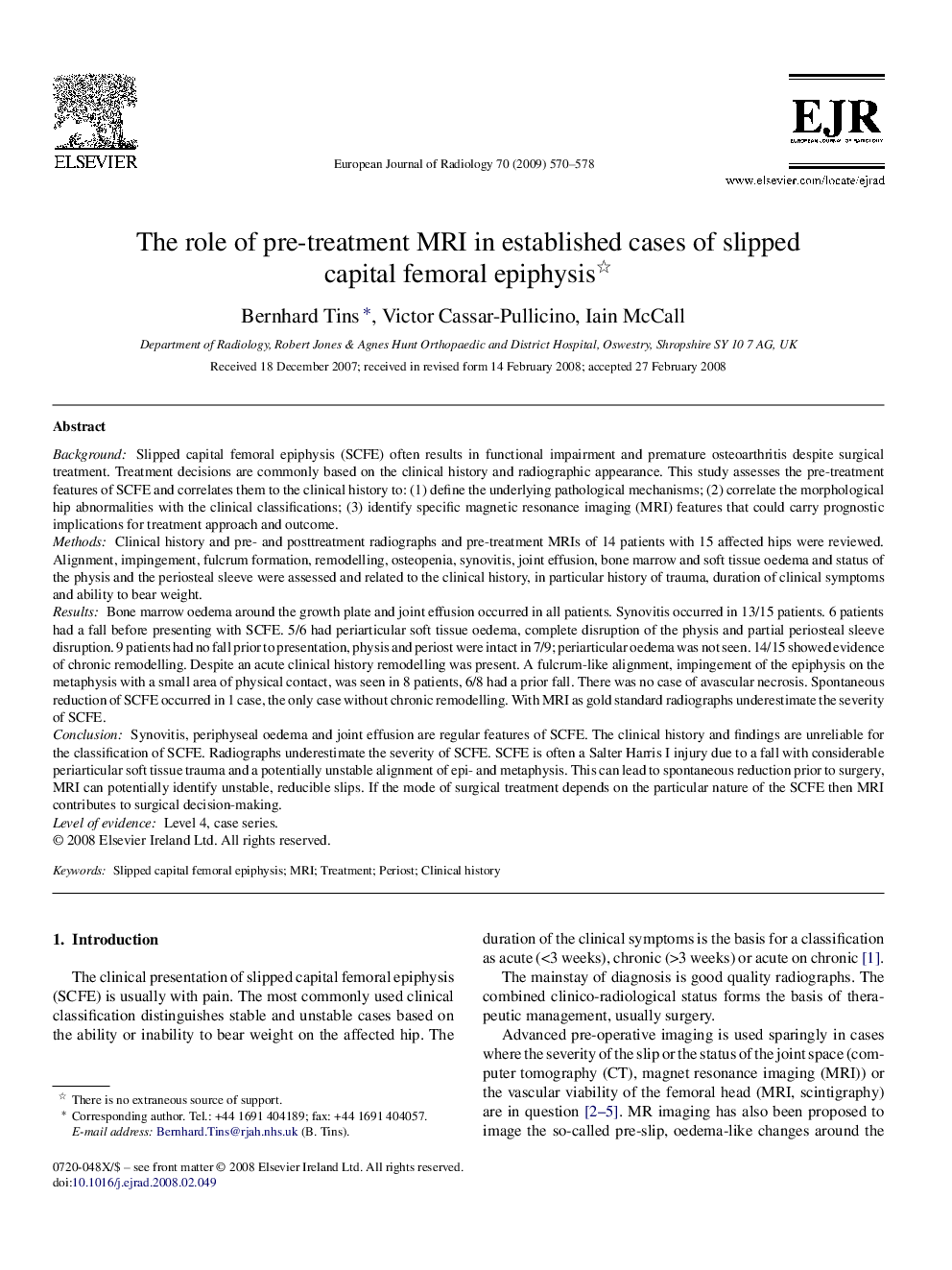| کد مقاله | کد نشریه | سال انتشار | مقاله انگلیسی | نسخه تمام متن |
|---|---|---|---|---|
| 4227091 | 1609826 | 2009 | 9 صفحه PDF | دانلود رایگان |

BackgroundSlipped capital femoral epiphysis (SCFE) often results in functional impairment and premature osteoarthritis despite surgical treatment. Treatment decisions are commonly based on the clinical history and radiographic appearance. This study assesses the pre-treatment features of SCFE and correlates them to the clinical history to: (1) define the underlying pathological mechanisms; (2) correlate the morphological hip abnormalities with the clinical classifications; (3) identify specific magnetic resonance imaging (MRI) features that could carry prognostic implications for treatment approach and outcome.MethodsClinical history and pre- and posttreatment radiographs and pre-treatment MRIs of 14 patients with 15 affected hips were reviewed. Alignment, impingement, fulcrum formation, remodelling, osteopenia, synovitis, joint effusion, bone marrow and soft tissue oedema and status of the physis and the periosteal sleeve were assessed and related to the clinical history, in particular history of trauma, duration of clinical symptoms and ability to bear weight.ResultsBone marrow oedema around the growth plate and joint effusion occurred in all patients. Synovitis occurred in 13/15 patients. 6 patients had a fall before presenting with SCFE. 5/6 had periarticular soft tissue oedema, complete disruption of the physis and partial periosteal sleeve disruption. 9 patients had no fall prior to presentation, physis and periost were intact in 7/9; periarticular oedema was not seen. 14/15 showed evidence of chronic remodelling. Despite an acute clinical history remodelling was present. A fulcrum-like alignment, impingement of the epiphysis on the metaphysis with a small area of physical contact, was seen in 8 patients, 6/8 had a prior fall. There was no case of avascular necrosis. Spontaneous reduction of SCFE occurred in 1 case, the only case without chronic remodelling. With MRI as gold standard radiographs underestimate the severity of SCFE.ConclusionSynovitis, periphyseal oedema and joint effusion are regular features of SCFE. The clinical history and findings are unreliable for the classification of SCFE. Radiographs underestimate the severity of SCFE. SCFE is often a Salter Harris I injury due to a fall with considerable periarticular soft tissue trauma and a potentially unstable alignment of epi- and metaphysis. This can lead to spontaneous reduction prior to surgery, MRI can potentially identify unstable, reducible slips. If the mode of surgical treatment depends on the particular nature of the SCFE then MRI contributes to surgical decision-making.Level of evidenceLevel 4, case series.
Journal: European Journal of Radiology - Volume 70, Issue 3, June 2009, Pages 570–578